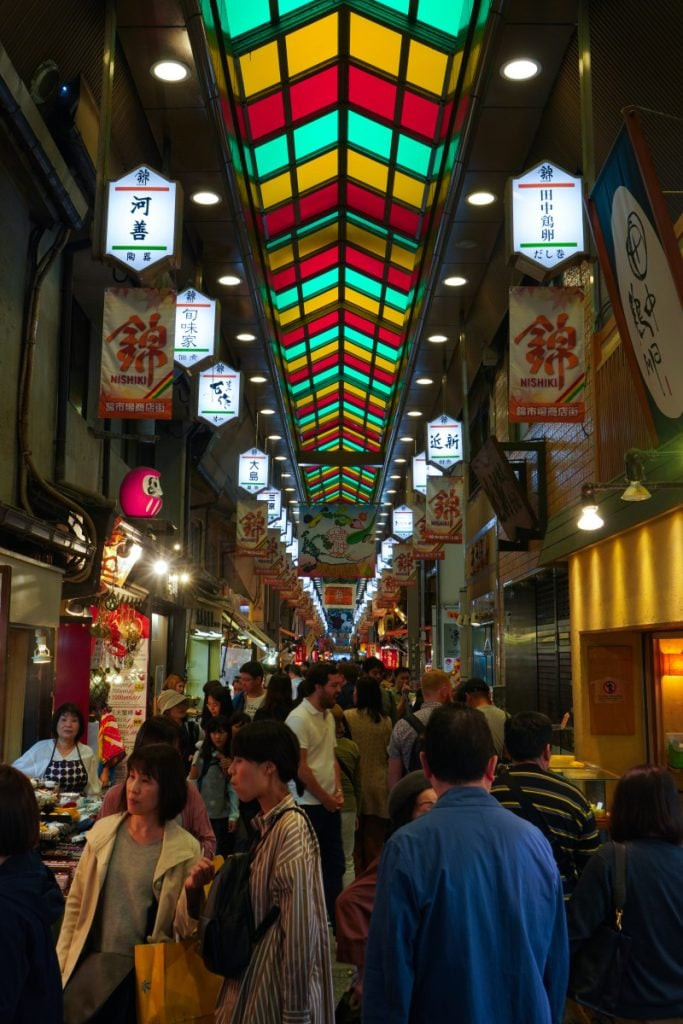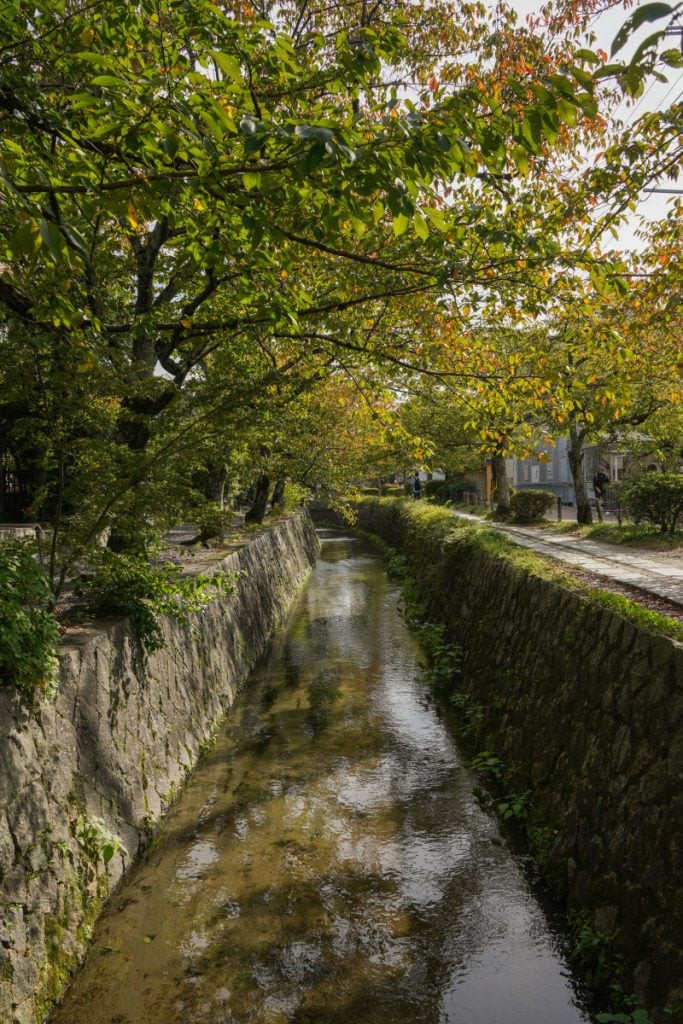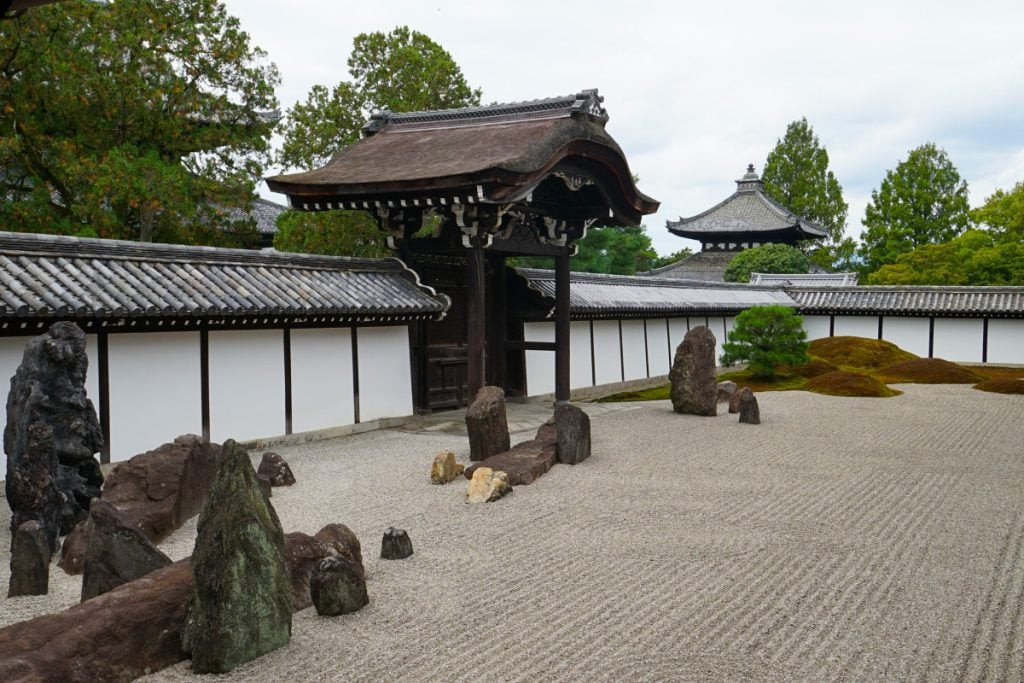Kyoto Travel Itinerary planning can be overwhelming, but SIXT.VN makes it simple. We offer personalized advice and services to ensure your trip to Japan is unforgettable. With our help, you can navigate the cultural richness and historical sites of Kyoto effortlessly. Discover how our comprehensive services can transform your travel dreams into reality, ensuring a smooth and enriching experience. Explore the best of Kyoto with confidence and ease.
1. Why Should You Plan A Kyoto Travel Itinerary?
Planning a Kyoto travel itinerary is crucial for experiencing the best of this historic city. Kyoto, Japan’s cultural capital, boasts numerous temples, gardens, and traditional districts that require thoughtful planning to fully appreciate. A well-structured itinerary ensures you maximize your time, visit key attractions, and immerse yourself in the local culture without feeling overwhelmed. According to a report by the Japan National Tourism Organization (JNTO) in 2023, travelers who plan their itineraries in advance report higher satisfaction rates due to efficient time management and reduced stress. SIXT.VN offers tailored Kyoto travel itineraries to match your interests, whether you’re drawn to serene temples, bustling markets, or exquisite culinary experiences.
2. What Are The Key Steps In Creating A Kyoto Travel Itinerary?
Creating an effective Kyoto travel itinerary involves several essential steps:
-
Determine the Length of Your Stay: Decide how many days you can dedicate to Kyoto. This will influence the depth and breadth of your itinerary.
-
Identify Your Interests: Are you interested in temples, gardens, food, or traditional crafts? Tailor your itinerary to match your preferences.
-
Prioritize Must-See Attractions: List the top sights you don’t want to miss, such as Kinkaku-ji (Golden Pavilion), Fushimi Inari-taisha, and Kiyomizu-dera.
-
Group Attractions by Location: Organize your itinerary by geographical area to minimize travel time and maximize efficiency.
-
Allocate Time for Each Activity: Estimate how long you want to spend at each attraction, including travel time between locations.
-
Include Buffer Time: Leave room for unexpected delays or spontaneous discoveries.
-
Plan for Meals: Research and include notable restaurants or food experiences in your itinerary.
-
Consider Transportation Options: Understand the best ways to get around Kyoto, such as trains, buses, or taxis.
-
Book Accommodations Strategically: Choose a hotel or guesthouse that is centrally located or near convenient transportation hubs.
-
Review and Adjust: Finalize your itinerary and make any necessary adjustments based on travel times and opening hours.
SIXT.VN can assist with each of these steps, providing expert advice and logistical support to create a seamless Kyoto travel experience.
3. What Are The Top Attractions To Include In A Kyoto Travel Itinerary?
When planning a Kyoto travel itinerary, including these top attractions will ensure a comprehensive and unforgettable experience:
-
Kinkaku-ji (Golden Pavilion): A stunning Zen Buddhist temple covered in gold leaf, reflecting beautifully on its surrounding pond.
-
Fushimi Inari-taisha: Famous for its thousands of vibrant red torii gates winding up a mountainside.
-
Kiyomizu-dera: A historic temple with a wooden stage offering panoramic views of Kyoto.
-
Arashiyama Bamboo Grove: A magical path through towering bamboo stalks.
 Serene Arashiyama Bamboo Grove
Serene Arashiyama Bamboo Grove -
Nishiki Market: Kyoto’s bustling kitchen, offering a wide array of local foods, spices, and kitchenware.
 Vibrant Nishiki Market
Vibrant Nishiki Market -
Gion District: Kyoto’s geisha district, known for its traditional wooden machiya houses and teahouses.
-
Ryoan-ji Temple: Famous for its enigmatic Zen rock garden, inviting contemplation and peace.
-
Philosopher’s Path: A serene canal-side walk lined with cherry trees, perfect for a reflective stroll.
 Scenic Philosopher's Path
Scenic Philosopher's Path -
Nijo Castle: The former residence of the Tokugawa shogunate, featuring opulent architecture and stunning gardens.
-
Sanjusangen-do Temple: Home to 1,001 life-sized statues of Kannon, the goddess of mercy.
SIXT.VN can help you prioritize and organize these attractions into a customized itinerary that suits your interests and schedule.
4. How Can I Customize A Kyoto Travel Itinerary To Fit My Interests?
Customizing a Kyoto travel itinerary to fit your interests is essential for a personalized experience. Here’s how you can tailor your trip:
-
For Temple Enthusiasts: Focus on visiting renowned temples like Kinkaku-ji, Kiyomizu-dera, and Ryoan-ji, and explore smaller, lesser-known temples such as Nanzen-ji or Eikan-do.
-
For Garden Lovers: Dedicate time to exploring Kyoto’s exquisite gardens, including the moss garden at Saiho-ji (requires advance reservation), the serene Shisen-do, and the traditional gardens of Nijo Castle.
-
For Foodies: Immerse yourself in Kyoto’s culinary scene by visiting Nishiki Market, taking a cooking class, enjoying a traditional tea ceremony, and dining at local restaurants offering kaiseki (multi-course Japanese dinner) or ramen.
-
For History Buffs: Explore historical sites such as Nijo Castle, the Kyoto Imperial Palace, and the Samurai Kembu Theater for demonstrations of traditional sword fighting.
-
For Art and Craft Aficionados: Visit the Kyoto National Museum, explore the Gion district for traditional crafts, and attend a pottery class in the Kiyomizu area.
-
For Nature Seekers: Spend time in the Arashiyama Bamboo Grove, hike up Mount Daimonji for panoramic views, and stroll along the Philosopher’s Path.
SIXT.VN specializes in creating customized Kyoto travel itineraries that align with your unique interests. We offer expert recommendations and handle all the logistics to ensure a memorable trip.
5. What Is The Best Time Of Year To Visit Kyoto For My Travel Itinerary?
The best time of year to visit Kyoto depends on your preferences and what you want to experience. Here’s a seasonal guide to help you decide:
-
Spring (March to May):
- Pros: Cherry blossoms (sakura) are in full bloom, creating stunning landscapes. The weather is mild and pleasant.
- Cons: This is the peak tourist season, so expect larger crowds and higher prices.
- Activities: Hanami (cherry blossom viewing), visiting gardens, and attending spring festivals.
-
Summer (June to August):
- Pros: Lush greenery and vibrant summer festivals.
- Cons: Hot and humid weather, occasional rain (tsuyu season in June).
- Activities: Attending the Gion Matsuri festival in July, visiting temples and gardens, and enjoying traditional summer sweets.
-
Autumn (September to November):
- Pros: Spectacular autumn foliage (koyo), with vibrant reds, oranges, and yellows. Comfortable temperatures.
- Cons: Similar to spring, this is a popular time, so expect crowds.
- Activities: Momiji-gari (autumn leaf viewing), visiting temples and gardens, and attending autumn festivals.
 Vibrant Autumn Foliage in Kyoto
Vibrant Autumn Foliage in Kyoto -
Winter (December to February):
- Pros: Fewer tourists, serene landscapes, and the chance to see snow-covered temples and gardens.
- Cons: Cold weather, some attractions may have limited hours.
- Activities: Visiting temples and gardens, enjoying winter illuminations, and experiencing traditional winter cuisine.
SIXT.VN provides up-to-date information on seasonal events and the best times to visit specific attractions, helping you plan your Kyoto travel itinerary for an optimal experience.
6. How Can I Include Day Trips In My Kyoto Travel Itinerary?
Including day trips in your Kyoto travel itinerary can enhance your experience by exploring nearby attractions and regions. Here are some popular day trip options:
-
Nara:
- Highlights: Todai-ji Temple (housing a giant bronze Buddha statue), Nara Park (roaming wild deer), and Kasuga Taisha Shrine.
- Travel Time: Approximately 45 minutes by direct train from Kyoto Station.
- Why Visit: Offers a blend of cultural landmarks and natural beauty.
-
Osaka:
- Highlights: Osaka Castle, Dotonbori (vibrant street food area), and Universal Studios Japan.
- Travel Time: About 30 minutes by train from Kyoto Station.
- Why Visit: Provides a contrast to Kyoto with its modern urban atmosphere and culinary delights.
-
Uji:
- Highlights: Byodo-in Temple (a UNESCO World Heritage site), Uji tea plantations, and the Tale of Genji Museum.
- Travel Time: Approximately 30 minutes by train from Kyoto Station.
- Why Visit: Known for its rich tea culture and historic temples.
-
Kobe:
- Highlights: Kobe beef, the picturesque harbor area, and the Hakutsuru Sake Brewery Museum.
- Travel Time: Around 1 hour by train from Kyoto Station.
- Why Visit: Famous for its culinary specialties and scenic waterfront.
-
Kurama and Kibune:
- Highlights: Kurama-dera Temple (mountain temple), the atmospheric Kibune Shrine, and hiking trails between the two villages.
- Travel Time: About 30 minutes by train to Demachiyanagi Station, then a 30-minute train ride to Kurama.
- Why Visit: Offers a tranquil escape into nature and spiritual sites.
When planning a day trip, consider transportation options, travel times, and opening hours of attractions to maximize your visit. SIXT.VN can assist with arranging transportation and providing detailed itineraries for these day trips, ensuring a smooth and enjoyable excursion.
7. What Transportation Options Should I Consider For My Kyoto Travel Itinerary?
When planning your Kyoto travel itinerary, consider these transportation options to navigate the city efficiently:
-
Subway: Kyoto has two subway lines, the Karasuma Line and the Tozai Line, which are useful for traveling to major attractions and connecting to other transportation hubs.
-
Buses: Kyoto’s bus network is extensive and covers most areas of the city. It is particularly useful for reaching attractions not directly accessible by subway. Consider purchasing a one-day bus pass for unlimited travel.
-
Japan Rail (JR) Lines: The JR lines, such as the JR Sagano/San-in Line, are convenient for reaching destinations like Arashiyama. The Japan Rail Pass can be cost-effective for tourists traveling extensively throughout Japan.
-
Taxis: Taxis are readily available and can be a convenient option for short distances or when traveling in groups. However, they can be more expensive than public transportation.
-
Bicycles: Renting a bicycle is a popular way to explore Kyoto, especially for leisurely visits to temples, gardens, and along the Kamo River.
-
Walking: Many of Kyoto’s attractions are located within walking distance of each other, making walking a great way to experience the city’s atmosphere and discover hidden gems.
SIXT.VN can provide detailed transportation guides and assistance with purchasing passes or arranging private transportation to ensure seamless travel throughout Kyoto.
8. How Can I Budget For My Kyoto Travel Itinerary?
Budgeting for your Kyoto travel itinerary requires careful planning to ensure you can enjoy your trip without overspending. Here are some tips to help you create a realistic budget:
-
Accommodation: Prices vary widely depending on the type of accommodation. Budget hotels or guesthouses can range from $50 to $150 per night, while luxury hotels can cost $300 or more per night.
-
Transportation: A one-day bus pass costs around $6, while subway fares are typically $2 to $3 per ride. A Japan Rail Pass can be a cost-effective option for extensive travel.
-
Food: Dining costs can range from $10 for a casual meal to $50 or more for a fine dining experience. Consider eating at local markets and smaller restaurants to save money.
-
Attractions: Entrance fees for temples, gardens, and museums typically range from $5 to $10 per site.
-
Activities: Budget for activities such as tea ceremonies, cooking classes, or guided tours, which can range from $30 to $100 per person.
-
Miscellaneous: Set aside funds for souvenirs, snacks, and unexpected expenses.
A reasonable daily budget for a mid-range traveler in Kyoto can range from $150 to $300 per person, depending on your preferences and spending habits. SIXT.VN offers budget-friendly travel options and advice on how to save money while still enjoying a rich travel experience.
9. What Are Some Tips For Experiencing Local Culture In Kyoto?
To truly experience local culture in Kyoto, consider the following tips:
-
Visit Local Markets: Explore Nishiki Market to sample local foods and interact with vendors.
-
Attend a Tea Ceremony: Participate in a traditional tea ceremony to learn about the art of tea preparation and etiquette.
-
Wear a Kimono: Rent a kimono and stroll through historic districts like Gion or Higashiyama for a unique cultural experience.
-
Stay in a Ryokan: Experience traditional Japanese hospitality by staying in a ryokan (traditional inn) with tatami mats, futon beds, and onsen (hot springs).
-
Learn Basic Japanese Phrases: Knowing a few basic phrases can enhance your interactions with locals and show respect for their culture.
-
Attend Local Festivals: Check the local calendar for festivals and events, such as the Gion Matsuri in July or the Jidai Matsuri in October.
-
Visit Local Craft Shops: Explore shops selling traditional crafts such as pottery, textiles, and paper goods.
-
Try Local Cuisine: Sample regional specialties like kaiseki (multi-course Japanese dinner), shojin ryori (Buddhist vegetarian cuisine), and Kyoto-style ramen.
-
Respect Local Customs: Be mindful of local customs and etiquette, such as removing your shoes when entering temples or homes, and avoiding loud conversations in public places.
SIXT.VN can provide insider tips and arrange cultural experiences to help you immerse yourself in the local culture of Kyoto.
10. How Can SIXT.VN Enhance My Kyoto Travel Itinerary?
SIXT.VN offers a range of services designed to enhance your Kyoto travel itinerary:
-
Personalized Itinerary Planning: We create customized itineraries tailored to your interests, budget, and travel style.
-
Accommodation Booking: We offer a variety of accommodation options, from budget hotels to luxury ryokans, ensuring a comfortable stay.
-
Transportation Assistance: We provide detailed transportation guides and assistance with purchasing passes or arranging private transportation.
-
Cultural Experiences: We can arrange cultural activities such as tea ceremonies, cooking classes, and kimono rentals.
-
Guided Tours: We offer guided tours led by knowledgeable locals, providing insights into Kyoto’s history, culture, and hidden gems.
-
24/7 Support: Our customer support team is available 24/7 to assist you with any questions or concerns during your trip.
By using SIXT.VN, you can enjoy a seamless and stress-free Kyoto travel experience, knowing that every detail is taken care of. Contact us today to start planning your unforgettable Kyoto adventure.
Address: 260 Cau Giay, Hanoi, Vietnam.
Hotline/Whatsapp: +84 986 244 358.
Website: SIXT.VN.
FAQ: Your Kyoto Travel Itinerary Questions Answered
1. How many days are sufficient for a Kyoto travel itinerary?
Four to five days is ideal for a comprehensive Kyoto travel itinerary, allowing you to explore major attractions and experience local culture.
2. What is the best way to get around Kyoto?
The best ways to get around Kyoto are a combination of subway, buses, and walking. Consider a one-day bus pass for cost-effective travel.
3. Can I use the Japan Rail Pass in Kyoto?
Yes, the Japan Rail Pass can be used on JR lines in Kyoto, such as the JR Sagano/San-in Line for reaching Arashiyama.
4. What are some must-try foods in Kyoto?
Must-try foods in Kyoto include kaiseki (multi-course Japanese dinner), shojin ryori (Buddhist vegetarian cuisine), and Kyoto-style ramen.
5. Is it necessary to book accommodations in advance?
Yes, especially during peak tourist seasons like spring and autumn, it is highly recommended to book accommodations in advance.
6. What is the best time of year to see cherry blossoms in Kyoto?
The best time to see cherry blossoms in Kyoto is typically from late March to early April.
7. Are credit cards widely accepted in Kyoto?
While credit cards are accepted in many establishments, it is advisable to carry some cash, especially for smaller shops and restaurants.
8. What are some essential items to pack for a trip to Kyoto?
Essential items to pack include comfortable walking shoes, a universal adapter, a portable charger, and appropriate clothing for the season.
9. How can I participate in a tea ceremony in Kyoto?
SIXT.VN can arrange tea ceremony experiences, providing you with the opportunity to learn about the art of tea preparation and etiquette.
10. What are some etiquette tips for visiting temples and shrines in Kyoto?
Etiquette tips for visiting temples and shrines include removing your shoes when required, washing your hands and mouth at the purification fountain, and avoiding loud conversations.



